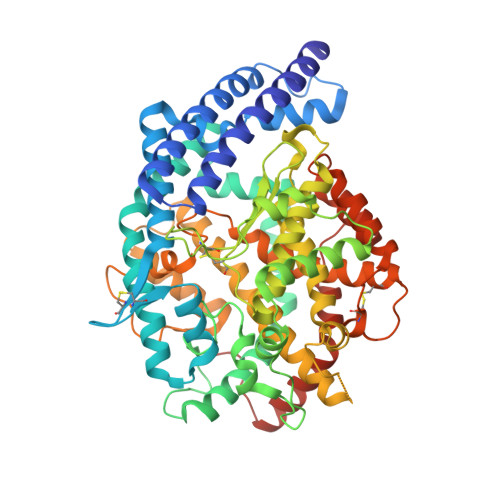Characterization of domain-selective inhibitor binding in angiotensin-converting enzyme using a novel derivative of lisinopril.
Watermeyer, J.M., Kroger, W.L., O'Neill, H.G., Sewell, B.T., Sturrock, E.D.(2010) Biochem J 428: 67-74
- PubMed: 20233165
- DOI: https://doi.org/10.1042/BJ20100056
- Primary Citation of Related Structures:
3L3N - PubMed Abstract:
Human ACE (angiotensin-converting enzyme) (EC 3.4.15.1) is an important drug target because of its role in the regulation of blood pressure via the renin-angiotensin-aldosterone system. Somatic ACE comprises two homologous domains, the differing substrate preferences of which present a new avenue for domain-selective inhibitor design. We have co-crystallized lisW-S, a C-domain-selective derivative of the drug lisinopril, with human testis ACE and determined a structure using X-ray crystallography to a resolution of 2.30 A (1 A=0.1 nm). In this structure, lisW-S is seen to have a similar binding mode to its parent compound lisinopril, but the P2' tryptophan moiety takes a different conformation to that seen in other inhibitors having a tryptophan residue in this position. We have examined further the domain-specific interactions of this inhibitor by mutating C-domain-specific active-site residues to their N domain equivalents, then assessing the effect of the mutation on inhibition by lisW-S using a fluorescence-based assay. Kinetics analysis shows a 258-fold domain-selectivity that is largely due to the co-operative effect of C-domain-specific residues in the S2' subsite. The high affinity and selectivity of this inhibitor make it a good lead candidate for cardiovascular drug development.
- Division of Medical Biochemistry, Institute of Infectious Disease and Molecular Medicine, University of Cape Town, Observatory, Cape Town, 7935, South Africa.
Organizational Affiliation:




















